The ability to capture health information in real time is changing the face of healthcare and clinical trials.
Take for example Novartis and Qualcomm’s next-generation inhaler that enables patients to have access to their own data on the use of their inhaler in near real time. The small, disposable, and low-power module contained within the inhaler device can detect and report usage, the time that the inhaler is used, as well as additional relevant information for patients and physicians. The module then wirelessly transmits the data to the patients’ smartphone and a Novartis COPD mobile application, which sends the data to the cloud, allowing patients and potentially their healthcare providers to monitor their COPD.
 This is just one example of how smart technology and wearables have already been adopted in various ways across the industry and are showing enormous potential, particularly in the area of measuring patient adherence and outcomes.
This is just one example of how smart technology and wearables have already been adopted in various ways across the industry and are showing enormous potential, particularly in the area of measuring patient adherence and outcomes.
“Smart technology and connected sensors provide healthcare providers with patient behavior data to offer real-time, information on drug usage and impact," says Jeremy Sohn, VP, global head of digital business development and licensing, Novartis.
“The proliferation of connected sensors is enabling pharma to improve how to measure clinical endpoints, and it’s enabling us to measure these endpoints in a home setting, thereby reducing the burden on patients having to come into the clinic and giving us the ability to capture these endpoints in real-world settings," he says. “In many cases, we can now capture endpoints continuously, allowing us to understand better how these endpoints might vary over time, or from setting to setting."
Novartis is also collaborating with Proteus Digital Health to develop “smart" pills that use tiny sensors to alert patients when they fail to take a drug as prescribed. These pills also inform physicians about the medication habits of their patients. Physicians are often left guessing why a prescribed drug may not have resulted in the expected outcome, but this technology can help physicians better understand if medication adherence or non-adherence is correlated to their patient’s most recent outcomes.
Another company working on smart pill technology is etectRx, which is developing medication adherence solutions for use in clinical research and healthcare. The company recently initiated a clinical trial using its ID-Cap System to better understand how pain medicine is used by patients. The ID-Cap System consists of an ingestible microsensor that is embedded in an oral dosage form that, when activated by stomach fluid, transmits digital messages to an external wearable reader to confirm ingestion.
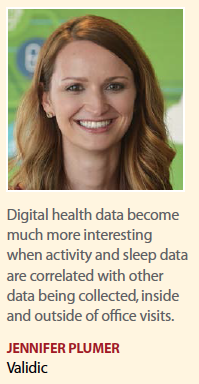 “The near ubiquitous use of smartphones, the increasing prevalence of wearable sensors, and the development of ingestible microchip transmitters now give the pharmacy profession a powerful array of tools to finally improve medication adherence across all therapies," says Harry Travis, president and CEO, etectRx.
“The near ubiquitous use of smartphones, the increasing prevalence of wearable sensors, and the development of ingestible microchip transmitters now give the pharmacy profession a powerful array of tools to finally improve medication adherence across all therapies," says Harry Travis, president and CEO, etectRx.
“Because of the increasing miniaturization of sensors and circuitry, we have reached an exciting inflexion point where we are seeing huge growth in inventive and innovative solutions packaged in very practical and affordable ways; much of this is targeted toward the growing health and wellness technology market," says Bill Byrom, senior director of product innovation at ICON. “This is an exciting opportunity for the pharmaceutical industry in two ways. First, in clinical trials we can collect richer data to better understand treatment effects and health status, we can enable more frequent measurement without significantly adding cost or burden, and we can better monitor patient safety and adherence between clinic visits. These all help to ensure trials have the best chance of success and enable accurate go/no-go decision making. Second, we can leverage smart gadgets to develop engaging beyond-the-pill strategies that add value to patients and healthcare professionals and increase brand stickiness."
As companies continue to look for new and improved ways to better understand what patients are experiencing in trials, Aaron Fleishman, head of emerging markets and technologies, BBK Worldwide, believes that smart technologies offer great promise in terms of seeing how patients are doing through better, real-time, physiological data collection.
“Beyond that, smart technology can also help with patient adherence," he continues. “What’s more, if access to better data through smart technology led to fewer study visits, participating in a study feels less overwhelming, which has the potential to eliminate a key barrier to participation too. I believe we need to get to a place where technology decisions are made on a franchise level rather than on a study-by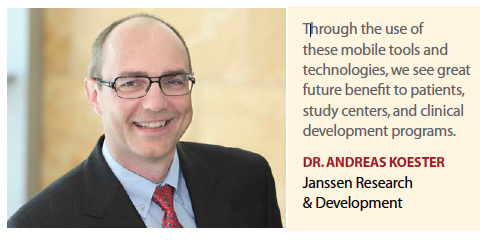 -study basis. Once this infrastructure is established, it will be far more efficient and cost-effective for implementation in studies."
-study basis. Once this infrastructure is established, it will be far more efficient and cost-effective for implementation in studies."
There are a number of areas where smart technology will open up a new set of additional opportunities as well as expand the reach of clinical researchers into areas that were until now not within their reach.
“At the epicenter of the smart technology shift is the ability to engage patients in their own real-world setting and provide information to both patients and investigators when they need it, in a manner they can easily interpret," says David Blackman, business innovation director of PPD. “In essence, we’re on a path toward empowering patients as advocates in their own personalized care and potentially even becoming part of behavioral change programs for them."
Many of the early examples of digital health data in clinical trials analyzed the exact output: number of steps taken or number of hours slept.
“Digital health data become much more interesting when activity and sleep data are correlated with other data being 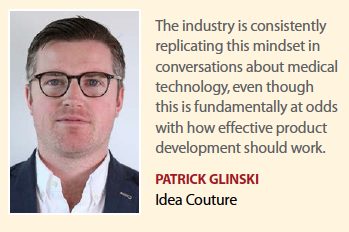 collected, inside and outside of office visits," says Jennifer Plumer, director of market development of Validic. This correlation can provide context as to why activity, sleep, or heart rate levels may have fluctuated. Sponsors can then uncover important patterns such as a participant being less active on days that a medication dose is missed or a participant sleeping more after taking the medication, indicating drowsiness as a possible side effect."
collected, inside and outside of office visits," says Jennifer Plumer, director of market development of Validic. This correlation can provide context as to why activity, sleep, or heart rate levels may have fluctuated. Sponsors can then uncover important patterns such as a participant being less active on days that a medication dose is missed or a participant sleeping more after taking the medication, indicating drowsiness as a possible side effect."
The Smart Future
Patrick Glinski, senior VP, head of IC/Health, Idea Couture, says in drug discovery, the market need is clear.
“The drive to identify new treatments is about reducing the burden of disease, meaning we always know what value proposition is being delivered," he says. “The industry is consistently replicating this mindset in conversations about medical technology, even though this is fundamentally at odds with how effective product development should work. Rather than starting with the biological, technology development that gets adopted needs to start with human needs. Has someone living with a chronic disease ever said, ‘I’ll swallow this technology because I really need an adherence solution?’ The answer, of course, is no. This is a classic, technology-first example of the challenge to articulate a clear value proposition for the people most impacted by what is being developed. Yet, this is what the industry is consistently doing — developing solutions that work for an organization’s business model, but not for the experiences of those impacted most by technology’s introduction."
“At Janssen, we’re excited about the potential of our eMeds platform, which applies smartphone technology, ‘smart’ medication packages, scanners, and apps to improve operational efficiency, patient adherence, and facilitate adaptive trial design," says Andreas Koester, M.D., Ph.D., VP, research & development operations innovation, Janssen Research & Development. “Through the use of these mobile tools and technologies, we see great future benefit to patients, study centers, and clinical development programs. Today, as pharmaceutical companies continue to innovate clinical trial approaches, mobile technology offers an ideal platform. By providing interactive applications through the convenience of a smartphone or similar device, clinical trial participant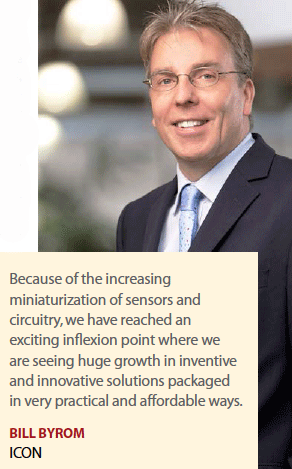 s are more actively enabled and empowered, which creates many positive implications for the individual and the study center."
s are more actively enabled and empowered, which creates many positive implications for the individual and the study center."
Google has put forward the idea of “micro-moments," which occur “when people reflexively turn to a device — increasingly a smartphone — to act on a need to learn something, do something, discover something, watch something, or buy something."
“These micro-moments are where pharma companies have huge opportunities — if they can get it right," Jason Levy, senior VP, experience strategy and innovation, Saatchi & Saatchi Wellness, says. “Tracking is nice, but there’s a place for brands to enter the space through connected devices and sensors where they can participate, intervene, and persuade consumers — and influence behavior.
Connected devices can fracture routines into micro-moments, which might not necessarily be the ideal place for brand marketing messages, but could be a place to deliver additional information that, by the way, is brought to you/sponsored by a pharma brand."
For example, Apple has an integrated breathing app, and instead of popping up randomly, sensors could trigger the app to run during moments of stress to remind users to breathe," Mr. Levy continues. “Ultimately, brands have an opportunity to be in the moment with the user via IoT and sensors."
Challenging the Clinical Status Quo
Targeting already has become so advanced that Internet of Things and sensor technology could rapidly transform the smart technology landscape for pharma.
“That said, there are two significant challenges that need to be addressed," Mr. Levy says. “First, few cutting-edge technologies are currently ubiquitous, although their increasing penetration and adoption will resolve that barrier over time. Second, and perhaps the greater challenge, is to ensure that smart technologies do no evil, give patients what they want, and provide utility while also protecting individuals’ privacy."
According to Mr. Fleishman, one of the most predominant concerns he hears from his company’s clients is about the data and whether or not the information is being captured accurately.
“The technology must be sophisticated enough to accurately capture all quantitative data necessary for clinical trial success," he says. “It’s one thing to measure heart rate, exercise, calorie counts, etc., but if the care providers are seeing patients less, they could be losing the types of clinical observations necessary for best treatment and care. And participants in trials are most assuredly choosing a study as a viable treatment option for them. So while sensor technology is important, and will continue to play a bigger role as it develops, I believe it should be used to enhance not replace the human element of treatment."
As we look toward 2017, Paul Gilbert, co-founder and CEO, MedAvante, believes it is time to fully acknowledge that we are at a crossing point of the analog/digital divide.
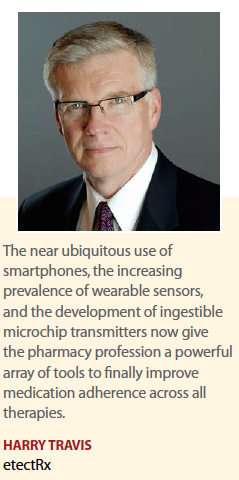 “This transformation will permanently alter — for the better — how we develop drugs and assess their value," he says. “The FDA’s two recent guidances formally encouraging the adoption of digital or eSource trials to replace paper, and risk-based monitoring to replace 100% source data verification, are catalyzing regulatory events and are game changers. And they are long overdue, with $4 billion a year spent on monitoring paper at sites. These FDA endorsements are properly upending the economics of trials and the existing industry power structure. The agency has paved the way for the industry to achieve less costly and more efficient drug development and set the stage for the use of smart technology in clinical trials. The result will be faster trials that detect better signal and are more frequently conclusive — pushing up historically low success rates. It will also mean a new class of technology companies will emerge to enable this turn to eSource."
“This transformation will permanently alter — for the better — how we develop drugs and assess their value," he says. “The FDA’s two recent guidances formally encouraging the adoption of digital or eSource trials to replace paper, and risk-based monitoring to replace 100% source data verification, are catalyzing regulatory events and are game changers. And they are long overdue, with $4 billion a year spent on monitoring paper at sites. These FDA endorsements are properly upending the economics of trials and the existing industry power structure. The agency has paved the way for the industry to achieve less costly and more efficient drug development and set the stage for the use of smart technology in clinical trials. The result will be faster trials that detect better signal and are more frequently conclusive — pushing up historically low success rates. It will also mean a new class of technology companies will emerge to enable this turn to eSource."
Mr. Blackman agrees that one of the main challenges for our industry is the cultural change needed in the way we run clinical studies using new technologies.
“The use of digital health is still relatively new in our industry, and the reliance that comes with using technology as the method of endpoint collection to prove the effectiveness and safety of a new drug has not yet been widely adopted," he says. (PV)
~~~~~~~~~~~~~~~~~~~~~~~~~~~~
The Blockchain
Mark Stevens
Chief Commercial
Officer, Publicis Health
No outcomes are revolutionary until the cost, quality, and outcomes of care are realized by the individual patient. Based on this premise, there are a number of ways blockchain can affect healthcare delivery in the United States. The technical definition of blockchain is that it is a record or ledger of digital events — one that is distributed or shared among different parties.
According to a recent study by Cutting Edge, patient recruitment accounts for about 32% of total trial costs. Vendor fees are an additional 25%. With blockchain’s promise of portability and security, the patient can now hold the “key" to make his/her health records available, so that the industry can tackle this 57% cost by bringing in new cures faster and cheaper.
Access by permission will revolutionize the time and costs of the future of clinical trials.
To some extent, we can envision the future of “organized customers" such as integrated delivery networks (IDNs) and accountable care organizations making the patient the owner of his/her health records. In the world of blockchain, the patient will hold the key for making referrals, emergency admissions, cross-geography treatments, etc. to be activated in a matter of minutes instead of days, weeks, and months.
If individual health records are made available anonymously by universal permission to key stakeholders in the blockchain, someday every one of us can have a “health score" (HS) like many of us have credit scores. This score will determine individual risk metrics and provide a huge encouragement to live healthy and thereby reduce the overall healthcare burden to employers and the government.
With this massive longitudinal data and with the individual patient holding the key, he or she can grant permission via blockchain to make his/her anonymous health information available for meta analyses. Treatment protocols will potentially be far better than they are today and this might even trigger more companion diagnostics (CDx) to increase the practice of precision medicine resulting in a massive increase in life expectancy.


















